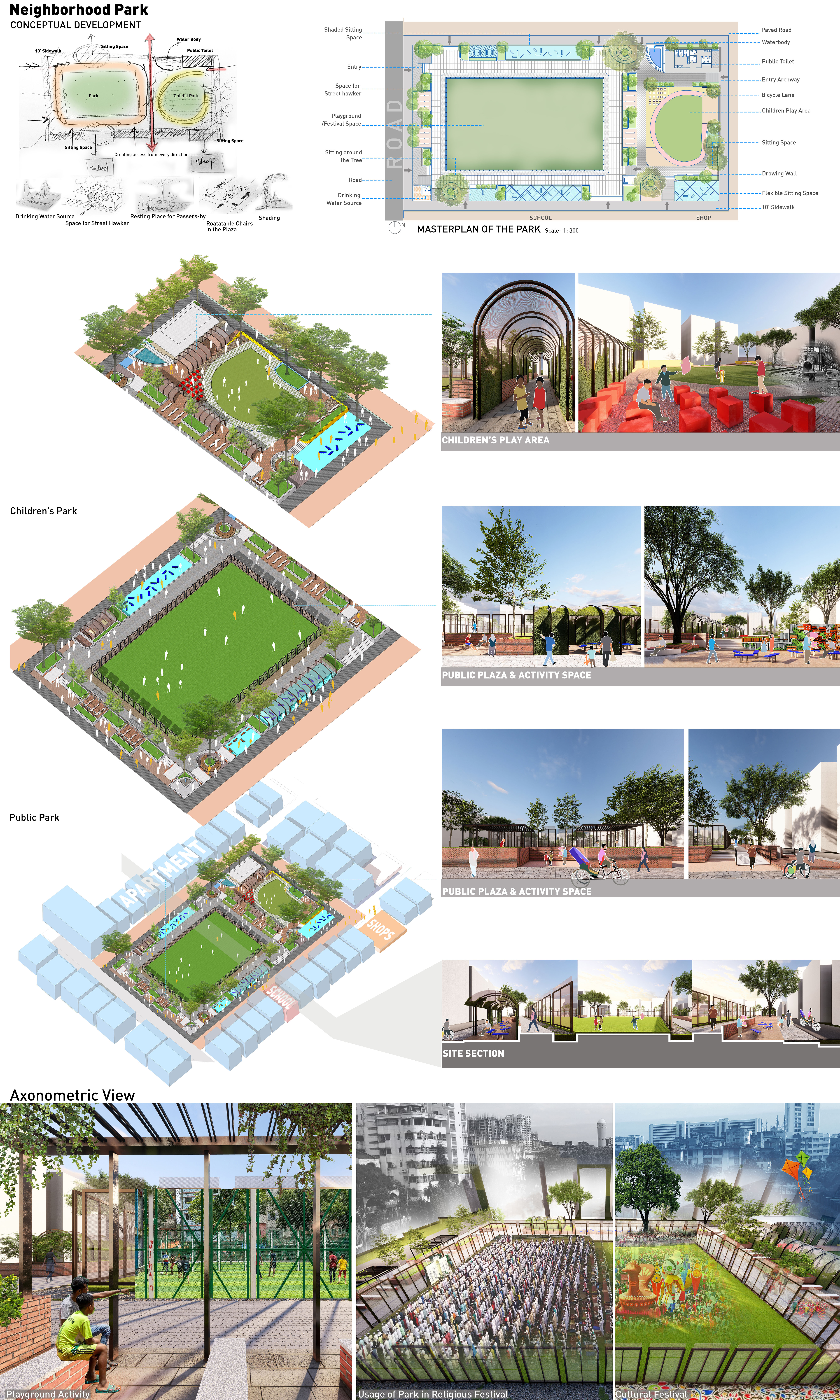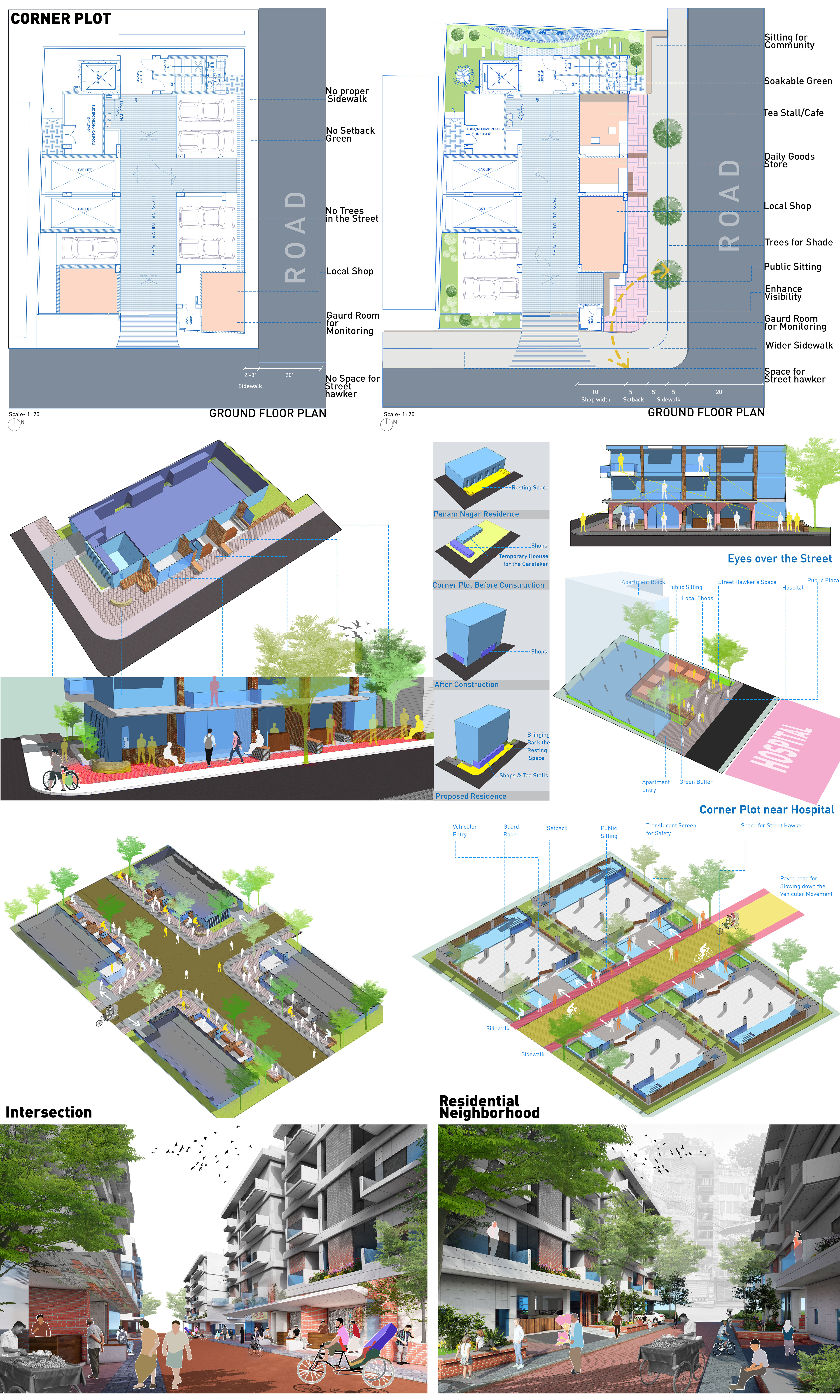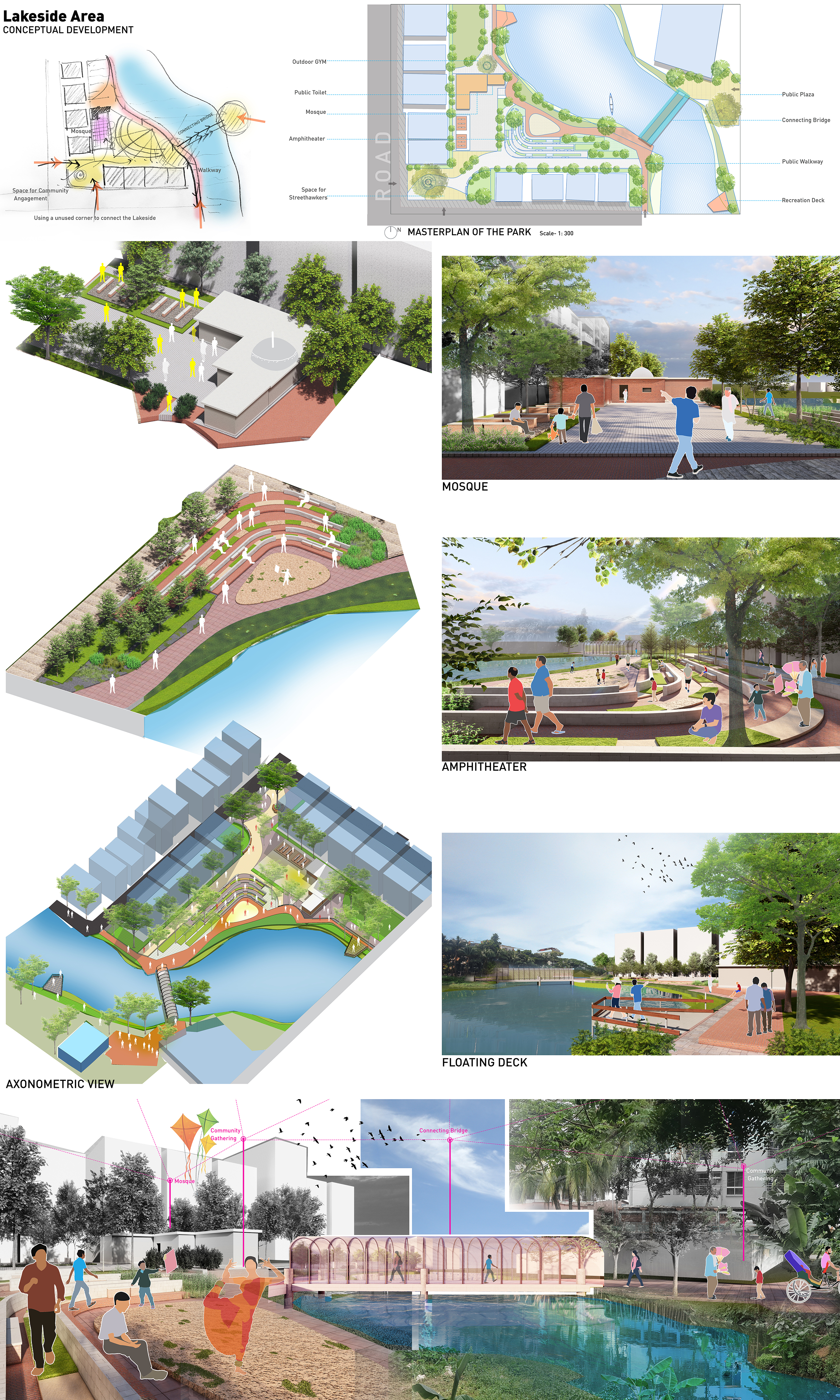
THE VOID INBETWEEN URBAN NEIGHBORHOOD_THE URBAN CONTEXT OF DHAKA
“CITIES HAVE THE CAPABILITY OF PROVIDING
SOMETHING FOR EVERYBODY,
ONLY BECAUSE, AND OLNY WHEN, THEY ARE
CREATED BY EVERYBODY”
- Jane Jacobs
Dhaka, the capital of Bangladesh and one of the most densely populated cities on earth, is nearly three times as dense as Manhattan. The city's edges are constantly evolving to respond to its ever-growing needs. In this thesis, I aimed to apply lessons from old Dhaka to new developments amid urbanization, while questioning the unrestrained commitment to Western urban design principles in a South Asian city like Dhaka.
In the contemporary global context, where technological, socio-economic, and political paradigms are constantly shifting, traditional neighborhoods in South Asia continue to adapt. However, the lack of a sense of belonging and social cohesion in contemporary urban design makes new neighborhoods vulnerable and isolated, creating an invisible social void.
Le Corbusier, one of the pioneers of modern city planning, overlooked the importance of diversity that should be considered when designing cities in South Asia. When we follow Corbusian city planning, we often forget about the coexistence of diverse demographics in traditional cities. Without cultural spaces, residents lose their sense of belonging. This thesis addresses these social and cultural voids in Dhaka, aiming to reintegrate cultural dynamics into urban design by drawing critical references from both traditional and new neighborhoods.
In my thesis, I explored Jane Jacobs’s theories on urban space and her critique of modernist planning in her book *The Death & Life of Great American Cities*. I then sought to define the concept of the "social void" and explain why it is essential to address it today. Through case studies from old Dhaka, I first identified traces of diverse coexisting demographics. My analysis of these traditional spaces includes the stories of their streets, people, culture, sense of belonging, and socio-economic and political contexts.
Next, I studied various neighborhoods in newly developed Dhaka to determine how some have lost their identity by following Western city design patterns, while others strive to return to the city's organic growth pattern. Lastly, I examined multiple cultural and social spaces in new Dhaka neighborhoods and proposed ways to reintegrate these cultural values into urban design. These solutions can play a crucial role in creating communal neighborhoods where inhabitants can thrive with a strong sense of social integrity.
This thesis raises important questions about modern city planning and challenges architects and urban designers to reconsider how cities and neighborhoods in the Global South should be developed.
The key questions my thesis explores are:
1. What is a social void?
2. What formal and informal characteristics of traditional cities support the social life of the street?
3. What public and private spaces, such as temples and tea stalls, underpin the social life of the city?
4. Why do new urban environments lack deeply rooted norms and values?
5. How have designers attempted to integrate street life and community spaces into modern city designs, and how do they compare to traditional cities?
6. How can we translate elements of traditional cities into modern urban design to enhance street life and the sense of community?





